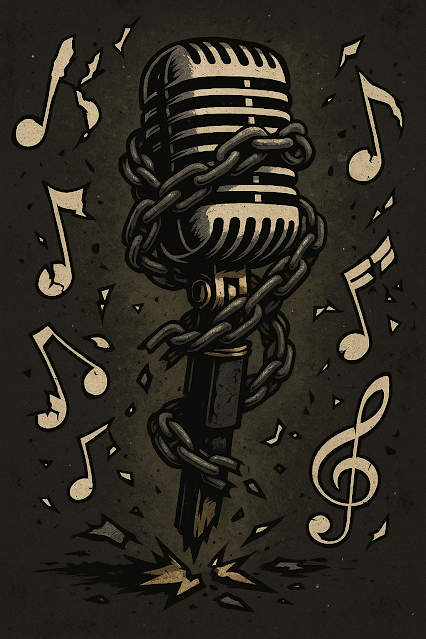Death by Policy: How American Institutions Are Quietly Thinning the Herd
Death by Policy: How American Institutions Are Quietly Thinning the Herd
Introduction
What if the greatest threat to your life wasn’t a natural disaster or a foreign enemy—but a bureaucratic decision buried in an NIH memo or a Medicaid proposal? From scientific research to healthcare access, a coordinated erosion of public good is underway. It’s slow, procedural, and written in the language of oversight and efficiency. But the outcome is unmistakable: fewer people survive.
This isn’t dysfunction. It’s design. And the people who survive it? That’s no accident either.
1. NIH Subawards: Cutting the Lifeline of Global Science
In May 2025, the National Institutes of Health announced that foreign institutions would no longer be eligible for subawards through U.S.-based research grants. For the layperson, this sounds like a small administrative tweak. In reality, it’s an act of scientific isolationism that endangers lives.
Subawards are how research projects work across borders. A U.S. lab might develop a cancer therapy, but needs clinical trials run in Ghana. Or maybe the best AI modeling lab is in Germany, and it takes on the data analysis. Under this new rule? Those partnerships are dead. Either the U.S. lab has to do it all—which is impossible—or the research collapses.
This isn’t just academic. From vaccine development to pandemic tracking, international cooperation saves lives. NIH has just declared that global expertise is expendable. And by extension, so are the people who benefit from it.
2. Social Programs Under Siege: The Cruel Arithmetic of Austerity
While NIH cuts partnerships, Congress is working to cut lifelines. Medicaid work requirements are expanding. Disability benefits are harder to access. Social Security faces constant threats of privatization. All while cost of living surges and wages stagnate.
Who’s targeted? The poor, the disabled, the elderly. People with chronic conditions. Veterans. The very citizens who rely most on the basic promises of a civilized society.
These aren’t just budget decisions. They’re acts of ideological cruelty—governance shaped by a belief that if you can’t contribute economically, you don’t matter. That death by delay is acceptable. That suffering is the price of self-reliance.
It’s not about waste. It’s about worth.
3. The RFK-Trump Axis: Weaponizing Distrust
RFK Jr. frames himself as a health freedom crusader. In truth, he is the mascot of a broader movement that seeks to dismantle institutional science, gut regulatory bodies, and replace consensus with chaos.
Trumpism complements this perfectly. It’s not about small government—it’s about no accountability. The defunding of global science, the sabotage of Medicaid, the weaponization of judicial process—all of it is part of a war on the very idea of shared responsibility.
Together, RFK and Trumpism form a new necropolitics: governance by neglect, scapegoating, and engineered failure. And in their world, the herd isn’t thinned by accident. It’s culled by design.
4. Eugenics in a Lab Coat
You don’t need to say the word “eugenics” to practice it. All you need is a system that rewards health, wealth, and youth—and punishes everyone else.
You slash Medicaid, and the sick die.
You restrict NIH subawards, and the global poor lose access to innovation.
You tighten disability rules, and the mentally ill go homeless.
You normalize conspiracies, and people stop vaccinating their children.
The death toll is silent. But it’s real.
5. The Real Agenda: Collapse, Confusion, and Control
Every one of these policies weakens the public’s ability to survive without private wealth. That’s not a flaw—it’s the feature. By making life harder for the majority, they manufacture consent for private solutions: for-profit medicine, gig work, charter schools, and private security.
The herd isn’t being thinned by chance. It’s being sculpted. The survivors are those who can pay. Everyone else is someone else's problem—or nobody's at all.
Conclusion: Name It to Fight It
This is not mere austerity. It is policy-driven attrition. This is what it looks like when a government quietly decides that some people just aren’t worth saving.
They don’t need camps. They don’t need firing squads. All they need is a system that says:
"We can’t fund that clinic."
"We can’t approve that claim."
"We can’t partner with that lab."
"We’re tightening the rules."
They say it’s about budgets. But the bodies tell a different story.
Call it what it is: death by policy. And start fighting like your life—and everyone else's—depends on it.
Because it does.



Comments
Post a Comment